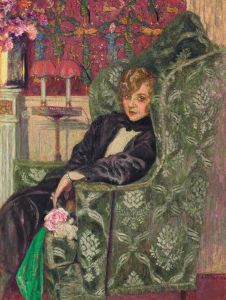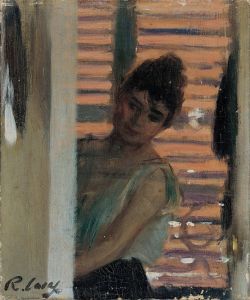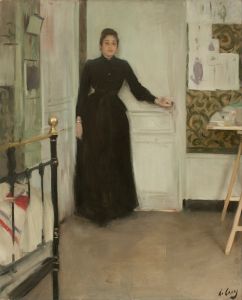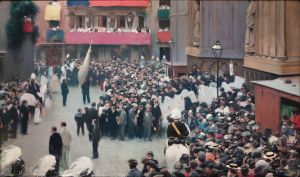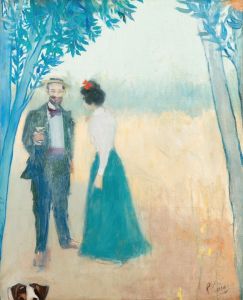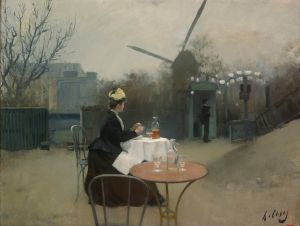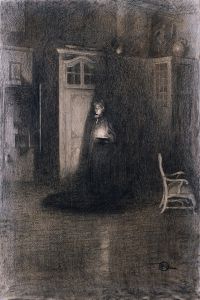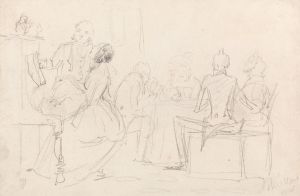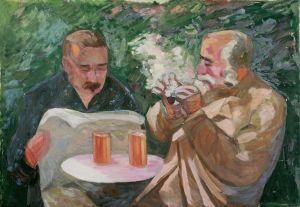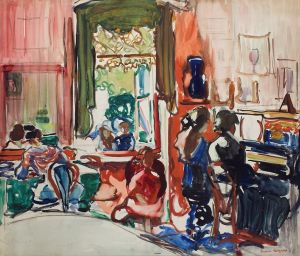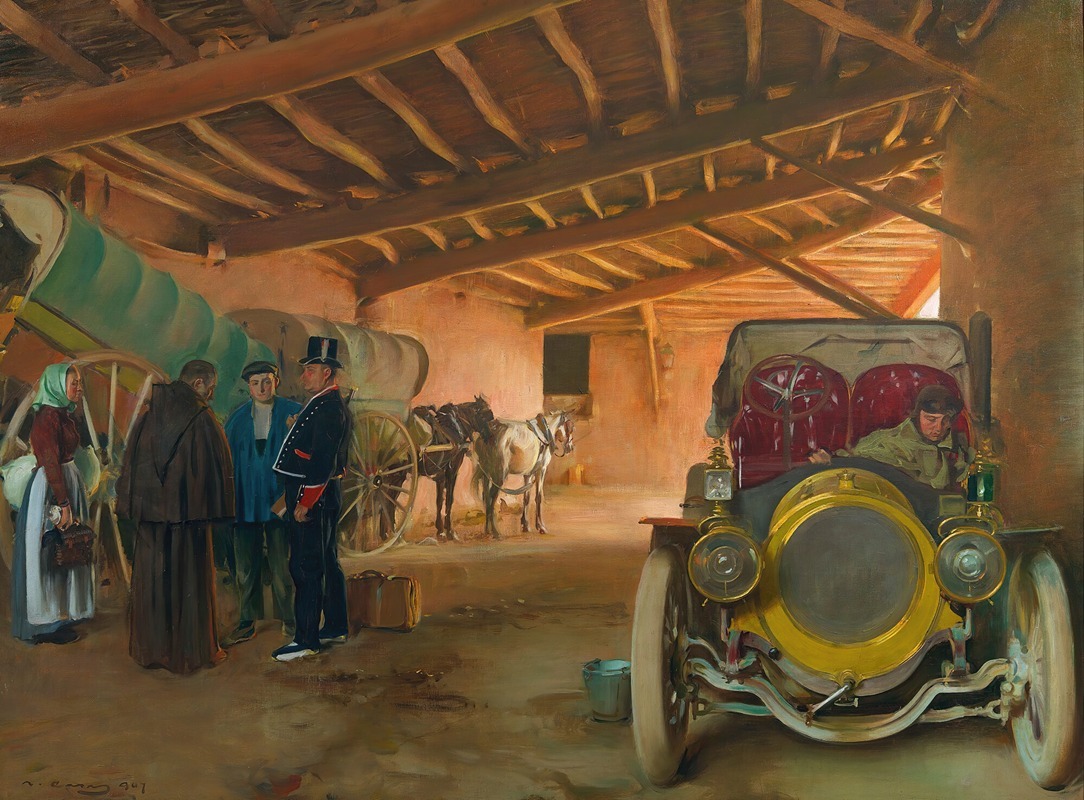
The coach house
A hand-painted replica of Ramón Casas’s masterpiece The coach house, meticulously crafted by professional artists to capture the true essence of the original. Each piece is created with museum-quality canvas and rare mineral pigments, carefully painted by experienced artists with delicate brushstrokes and rich, layered colors to perfectly recreate the texture of the original artwork. Unlike machine-printed reproductions, this hand-painted version brings the painting to life, infused with the artist’s emotions and skill in every stroke. Whether for personal collection or home decoration, it instantly elevates the artistic atmosphere of any space.
Ramón Casas i Carbó (1866–1932) was a prominent Spanish painter known for his significant contributions to Catalan modernism. His works often depicted social and cultural themes, capturing the essence of late 19th and early 20th-century life in Spain. One of his notable works is "The Coach House" (La Cotxera), which exemplifies his skill in portraying everyday scenes with a keen eye for detail and atmosphere.
"The Coach House" is a painting that reflects Casas's interest in the interplay between light and shadow, a characteristic feature of his style. Casas was known for his ability to capture the subtleties of light, which he used to enhance the mood and realism of his scenes. This particular painting is believed to depict a scene from a coach house, a place where horse-drawn carriages were kept, which was a common sight during the period in which Casas lived.
Casas's work often focused on the lives of the bourgeoisie and the working class, providing a window into the social dynamics of his time. "The Coach House" is no exception, as it likely portrays the daily operations and interactions within such a setting. The painting may include figures engaged in their tasks, horses, and carriages, all rendered with Casas's characteristic attention to detail and composition.
Ramón Casas was a central figure in the Catalan modernisme movement, which was part of a broader European trend towards modernism in art. This movement sought to break away from traditional artistic conventions and embraced new techniques and subjects. Casas's work, including "The Coach House," often featured elements of realism and impressionism, reflecting the influence of contemporary French art movements.
Throughout his career, Casas was associated with the artistic and intellectual circles of Barcelona, where he collaborated with other artists and writers. He was a founding member of Els Quatre Gats, a famous café and meeting place for artists, which played a crucial role in the development of modernisme in Catalonia. This environment fostered Casas's creativity and allowed him to explore various themes and styles in his work.
"The Coach House" is an example of Casas's ability to capture the essence of a scene with both technical skill and emotional depth. His use of color, light, and composition creates a vivid and engaging image that invites viewers to step into the world he depicts. While specific details about the painting's creation and current location may not be widely documented, it remains an important part of Casas's oeuvre and a testament to his talent as an artist.
In summary, Ramón Casas's "The Coach House" is a reflection of his mastery in portraying everyday life with a focus on light, atmosphere, and social context. As a key figure in Catalan modernisme, Casas's work continues to be celebrated for its contribution to the development of modern art in Spain.





